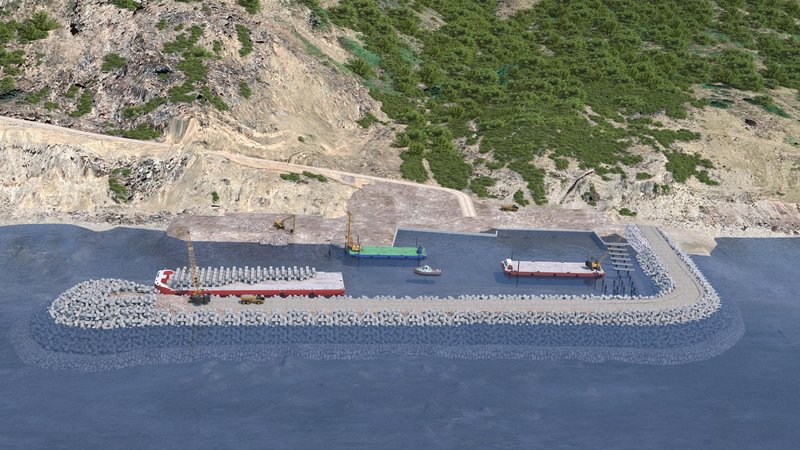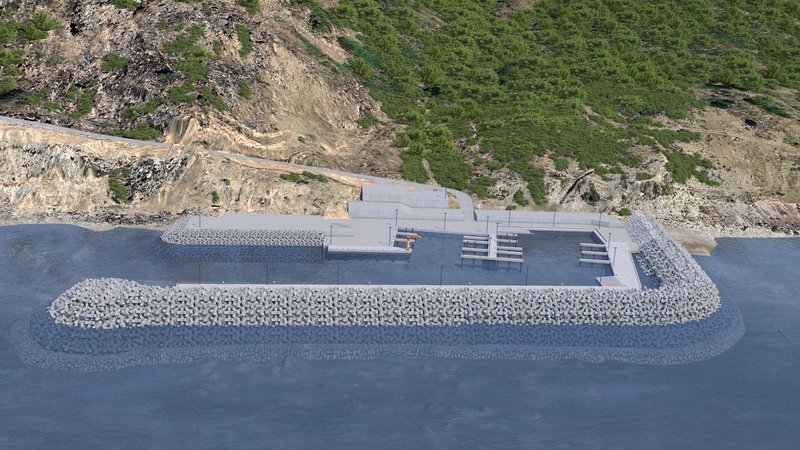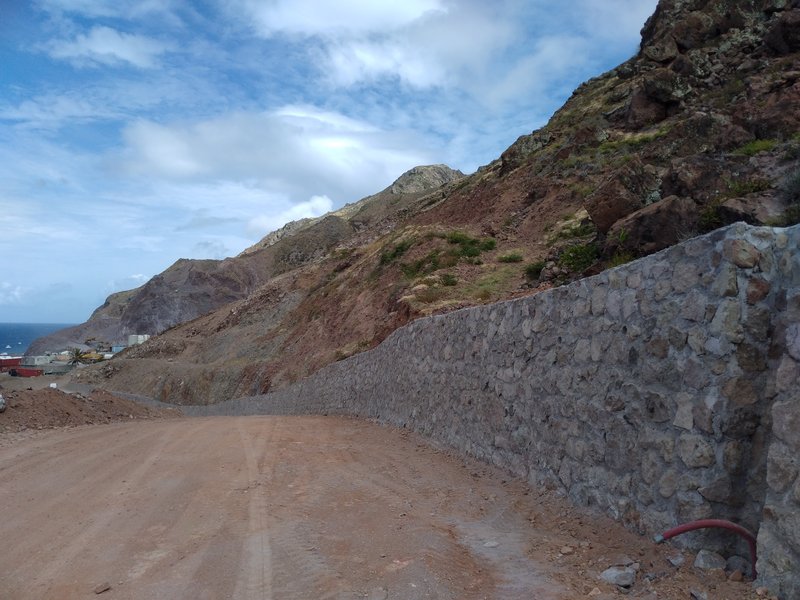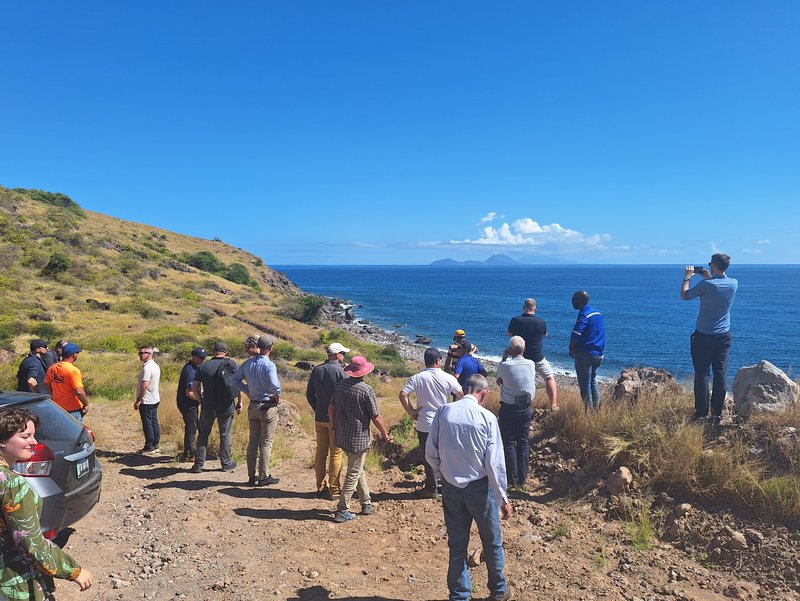Black Rocks Harbor
FAQs
FAQs
- How many workers will be on the island? – Workers on this project will build up over time, to a maximum of about 125-140 people at the peak of the project in Q1 2026.
- Where will the workers be housed? – A temporary container village will be placed in the Cattle Plantation area, which will include offices, housing and a recreational area. This will be set up by the contractor and will be ‘self-supporting’, with a RO water plant, sanitation and canteen. Garbage will be handled according to regulations and agreements.
- How will the local labor force be engaged? – The contractor will have several jobs available for people from the island. These will be published as they become available.
- What opportunities are there for local contractors? - The main contractor (BNIP) has agreements in place already and will explore these further.
- Do workers go through the same screening process as any other foreign employee?– Yes, all workers go through the regular process at IND, e.g. requirements for proof of good conduct, and proper medical certificates.
- Will this influx of workers have an impact on local food supply? – There will be a dedicated canteen at the camp site. The contractor will also have separate agreements in place for logistics of supplies.
- Will workers bring their families, and how will this impact schools? – Approximately five workers will bring a partner, however no children will be accompanying any of the workers. This means that there will be no impact on the schools.
- Which health insurance will the workers be covered by? – The workers will be covered by BNIP with an on-site first aid facility and arrangements in place for further treatment, including medivac.
- Will workers register at the Census office? – Yes, they will.
- Are workers allowed to stay on island after termination of contract or end of project? - No, only temporary work is permitted and both BNIP and PES guarantee workers to leave the island immediately after the project.
- What about safety and security personnel? – All safety partners on Saba, including KPCN, have been advised of the influx of workers for this project. BNIP has HSSE covered in their site organisation. The site also has a security office.
Black Rocks Harbor Reports
Archaeological Mitigation Black Rocks Area of Giles Quarter Saba (2021)
Archaeology |
In early 2020, Public Entity Saba, in corporation with SABARC, requested Zemi Cultural Heritage Services to provide a desk-based assessment of the known and potential cultural heritage in the terrestrial and maritime area known as “Black Rocks”. The desk-based assessment concluded with recommendations for archaeological mitigation of Black Rocks under the Malta Treaty and the BES Maritime Management Act.
In October 2020, archaeological and maritime fieldwork was carried out in the Black Rocks area. The results showed that pre-Columbian occupations at Black Rocks date back to 3484 BC, making the site by far the oldest known on Saba to date. Use of the site appears to have been as a staging ground for fishing. Two ship cannons were located during the maritime survey, but there is no evidence of a shipwreck in the vicinity. This report completed the archaeological mitigation of the terrestrial area. However, mitigation of the two ship canons is necessary as they are located close to the proposed breakwater. The full report can be downloaded below.
Addendum Archaeological Mitigation Black Rocks Site Report (2021)
Archaelogy |
In November 2021, Zemi Cultural Heritage Services provided an overview of options for the mitigation of the two ship cannons. This report can be downloaded below. In consultation with SABARC and the Saba Conservation Foundation, the Public Entity Saba decided to relocate the canons to a nearby dive site (Big Rock Market) before the start of the construction of Black Rocks Harbor and to install anodes on both cannons to start underwater in-situ electrolysis to preserve the cannons. This leaves open several options for future conservation and display of these cannons.
Socioeconomic Impact Assessment Report (2024)
Socioeconomic |
Ernst & Young LLP (EY) conducted a socioeconomic impact assessment for the upgrade of Fort Bay Harbor and the construction of Black Rocks Harbor. EY assessed the economic impacts associated with this project, including impacts to the gross domestic product, labor income and job creation. EY also reviewed the broader socioeconomic impacts, including increased tourist demand, supply chain efficiencies, increased trade activity, follow-on investments, and other socioeconomic benefits. The report concludes that the harbor project is expected to generate sizable economic and socioeconomic benefits to the local economy, supporting activities in the construction phase, as well as the future operations of the harbor facilities. Additionally, benefits are expected to extend into the long-term, supporting socioeconomic benefits in the local economy through its ripple effects and support to other industries in Saba. The full report can be downloaded below.
Environmental Impact Assessment (EIA)
Environmental |
EcoVision carried out an Environmental Impact Assessment (EIA) for the construction of Black Rocks Harbor. The full report can be downloaded below. The EIA assesses the natural values, environmental situation and impacts of the construction of a new harbor in the Black Rocks area and defines mitigation measures. The EIA also outlines the legal framework and obligations.
The EIA describes the present environmental situation as extreme with respect to erosion. Visibility in water is relatively high compared to other Caribbean sites. The main ecological values of the Black Rocks area are:
Presence of rare, endemic and endangered plant species.
Presence of reptiles with high conservation status.
Presence of protected coral species.
Recognized Important Bird Area.
Terrestrial impacts of the construction of Black Rocks Harbor include: loss of ecological values in footprint; possible disturbance of birds; impacts on landscape and catalyzing development of surrounding areas. Marine impacts include: loss of corals and other marine benthos; possible sedimentation of reefs and possible noise impacts. Positive impacts can be expected from stabilization and revegetation of eroded slopes.
In the EIA EcoVision has listed a large number of possible mitigation measures. The public entity has adopted and/or requested the contractor to adopt most of these mitigation measures. Some of the mitigation measures include the involvement of the Saba Conservation Foundation (SCF). Some examples of adopted mitigation measures are:
Revegetation
Adequate water drainage structures
Coral relocation from the Black Rocks site to Hole in the Corner
Monitoring of water quality during construction and adapt as needed
EcoVision also recommended to start a compensation campaign for the unmitigated ecological losses. The public entity has adopted several compensation measures, including designating three new marine reserves within the Saba National Marine Park; the creating an artificial reef and a donation to the Saba Research Center.









